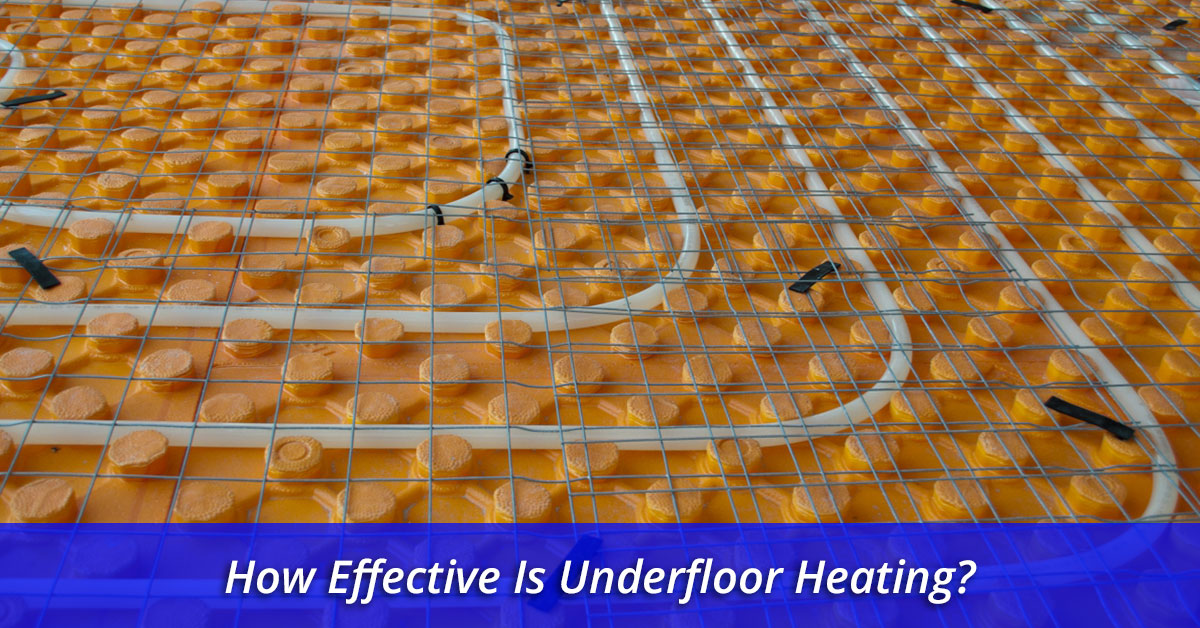How Effective Is Underfloor Heating?

During the frigid temperatures of winter, nothing seems more important than properly working heat in your home - until the heating bill arrives and makes your heart stop. Of course you want to stay warm during the winter, there’s no denying that. Aside from avoiding hypothermia and a slow death by freezing, proper indoor heating also provides a way to stay hale and live wherever you choose whilst thumbing your nose at the United Kingdom’s cold winter climate. So, what is the most effective way of keeping your home perfectly warm without simultaneously driving up your costs?
Heating Options
We have, thankfully, moved on to more efficient and less wasteful systems than a massive hearth fire used for both cooking and heating as much of the home as possible. Today, heating options run the gamut from baseboard heating and radiators to furnace-heated forced air and even the occasional wood stove - though the last is a dying breed. With so many different options, choosing the best for your home can be a weighty subject; many of these heating systems see issues in heating efficiency because it can be harder to heat the areas furthest from heating vents or to control the heat levels emitted. Unfortunately, it’s impractical to want to try each system in your home so, at best, you can experience the different systems in friends’ homes, find a trustworthy contractor from whom to solicit advice, and run several internet searches.
Going Under the Floor
In recent years, underfloor heating has gained precedence as one of the most effective and least wasteful heating systems. With underfloor heating, a warming element - either water-based or electric - is run through wiring or tubing under the floor to create a heated floor that emits heat throughout each room in which it is installed. This in floor heating option is generally more efficient than options like forced air and takes up less space than radiators or baseboard heating.
Benefits of Underfloor Heating
In terms of efficiency, underfloor heating ranks near the top of the list because it offers uniform distribution throughout a room. Rather than a radiator or forced air, which must throw heat across a room and does not heat a space evenly, the in floor heating system is comprised of a series of tubing or wiring that is evenly wound under the entirety of the room, so every corner is heated equally. In addition, warm air is lighter than cold air so, as the in floor heating runs, the heat starts at the bottom and gets pushed upward by the cold air, which offers even distribution from floor to ceiling just as it evenly heats across a room. This means that, even if your windows are a bit drafty, it will be easier and less costly to heat the room evenly.
Potential Pitfalls
The main problem for most when it comes to underfloor heating is the cost. The components needed for in floor heating aren’t necessarily prohibitively costly on their own; however, if you are not installing this system in an unfinished home or renovating your space, the cost of pulling up your floors, installing the underfloor heating pipes, and replacing the floors can add up to a higher cost. If you are in the middle of building or renovating your home, this is an excellent time to install underfloor heating! The one other lesser pitfall of in floor heating is much the same as you might face with radiators; it is harder to see immediate temperature changes when adjusting the in floor heating.
At Plumbing Supplies 24, we carry a full range of the components needed to install underfloor heating without racking up outrageous cost. If you are installing in floor heating in your home, wherever you live in the United Kingdom, we will ship the parts you need! Shop online today!


